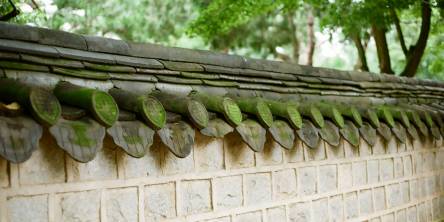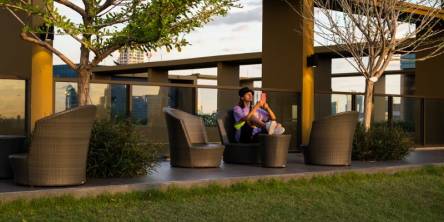Brush Clearing, Tree Removal, and More: How Property Maintenance Ensures Safety

Maintaining a property isn't only about appearance—it's a key part of protecting your home. Unmanaged vegetation can become a fire hazard or damage structures during storms. Actions like tree removal and brush clearing are essential for safety and environmental stability. These practices also support biodiversity and long-term land value.
Fire Prevention Through Vegetation Management
Effective vegetation management plays a vital role in fire prevention strategies. Overgrown brush, dry grasses, and unmanaged wooded areas act as fuel for wildfires. Eliminating these elements helps limit fire intensity and spread. Property owners who regularly maintain their land reduce the risk of destruction during fire season. Learning about safety techniques on resources like Spidermax can guide this important upkeep.
Creating Defensible Space
A defensible space is a safety zone between structures and wild vegetation. It’s designed to slow down or stop a wildfire before it reaches buildings. By removing dead plants, thinning trees, and keeping grass short, this zone acts as a buffer during wildfires. In areas with frequent droughts or heatwaves, this measure becomes even more crucial. It gives emergency services room to operate and prevents flames from reaching homes, sheds, and fences.
Enhancing Emergency Access
Overgrown paths and thick vegetation can block access during critical moments. Emergency vehicles need clear entry points and turning space to function properly. Brush clearing ensures that vehicles and personnel can move freely without obstruction. It also improves visibility, which helps responders locate specific buildings or hazards faster. Properly marked and maintained access routes may save valuable minutes in crisis situations.
Read more: Tree Pruning Techniques: Why Professional Services Matter
Mitigating Structural Hazards
Beyond fire risks, neglected trees and plants can pose serious threats to buildings and infrastructure. Heavy branches can fall during storms, while roots can shift foundations and damage underground lines. Regular maintenance prevents costly damage and keeps structures sound over time. A proactive approach saves money, preserves insurance eligibility, and ensures resident safety.
Preventing Property Damage
Dead or leaning trees are prone to collapse during wind or rain. Branches hanging over roofs or driveways present ongoing risks. Removing them before they fall avoids damage to homes, fences, and vehicles. Scheduled inspections help detect disease or instability in trees early. Maintenance also includes trimming limbs that might interfere with power lines or block gutters, preventing flooding and fire.
Protecting Infrastructure
Tree roots may grow into pipes, lift pavement, or compromise foundations. They seek moisture and often invade sewer systems or water lines. Clearing problematic plants protects utility systems and structural components. It also prevents sidewalks from cracking or lifting, reducing liability and injury risk. Addressing root issues early reduces repair costs and enhances property value over time.
Promoting Ecosystem Health
Clearing brush and managing trees also support the environment. Balanced maintenance encourages healthy soil, improves biodiversity, and controls invasive species. Responsible stewardship keeps your land both safe and ecologically sound. It also contributes to carbon storage and water regulation, reinforcing the resilience of natural systems around your property.
Encouraging Native Species
Overgrown areas often attract invasive plants that harm local habitats. These species can outcompete native flora, leading to soil depletion and habitat loss. Removing them allows native plants and wildlife to return. Creating space for local flora benefits pollinators and strengthens the natural food chain. Landowners who manage invasive growth support healthier forests, fields, and wetlands nearby.
Enhancing Soil and Water Quality
Proper vegetation control prevents soil erosion by stabilizing the ground with appropriate cover. It also improves how water is absorbed into the soil, reducing runoff and contamination. These benefits support both plant health and clean water supplies. Consistent maintenance protects against nutrient loss and sediment buildup in waterways. This practice not only preserves property but contributes to regional environmental health.
Regular brush clearing, tree removal, and strategic upkeep protect your property from natural hazards. These actions limit fire exposure, prevent structural damage, and encourage environmental balance. Staying proactive ensures a secure, resilient, and healthier living space for you and your community.
Similar Articles
Backyards are not simply the open spaces but they are the extensions of our homes where memories are made.
The majority of homeowners are aware of how frustrating it can be when a repair bill comes out of the blue
The exterior of your home is the first thing to deal with the elements and with each season, your home will be challenged in a certain way.
Most pests enter homes through cracks, gaps, or food sources, but bed bugs take a very different path
Every yard has challenges — a slope that limits space, soil that shifts after rain, or uneven ground that makes it hard to enjoy.
A skillion roof garage is a modern and practical solution for homeowners and property owners who need extra storage or workspace
Bathrooms have transformed over the last few decades. Once seen as purely functional spaces, they are now designed as retreats — private sanctuaries for relaxation, reflection, and rejuvenation.
Your backyard holds untapped potential. Right now, it might be nothing more than a patch of grass, a few scattered plants, or an underutilized space that you glance at through your kitchen window.
Enhance productivity and privacy by transforming your workspace with a soundproof phone booth—ideal for calls, focus, and modern office needs.









